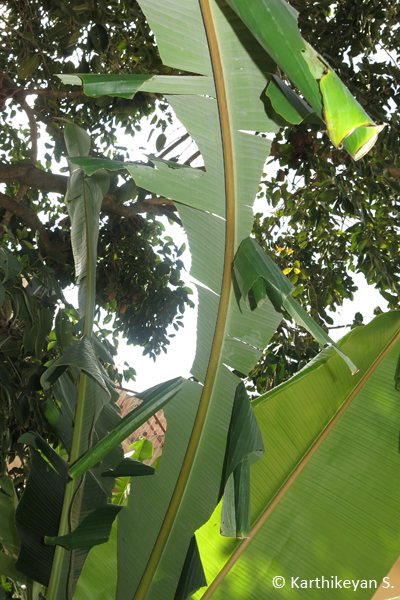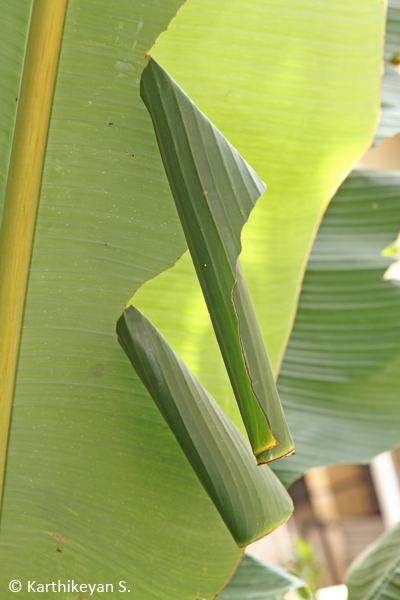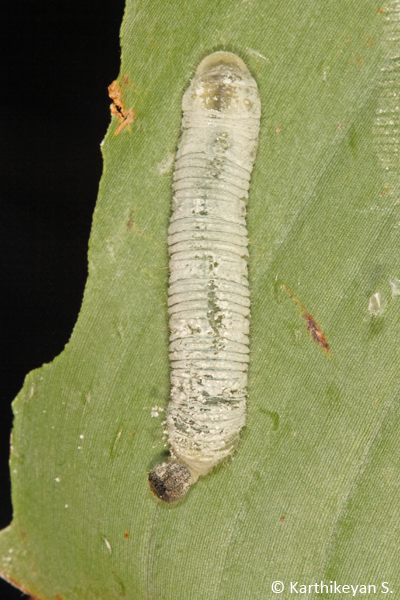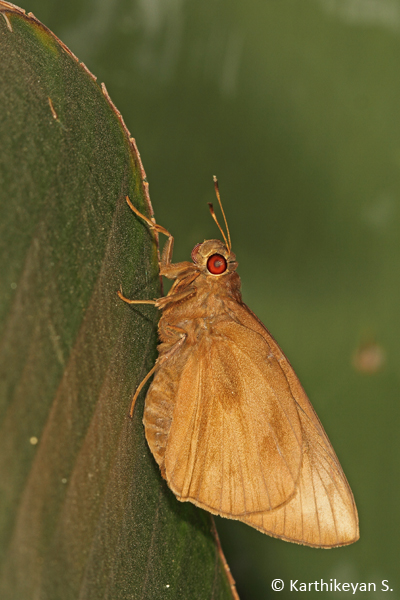About the same time three years ago, I wrote two blog posts. They were titled The Banana Plants and the Shortnosed Fruit Bats and The Mast Tree and the Tailed Jay. These essentially tried to introduce you to some of the denizens of my garden (read your immediate surroundings!).
If you recollect, I had written about the banana plants that were brought into our garden and how, over the years, they have managed to influence the various organisms that manage to eke out a living in a tiny island in the vast urban landscape that surrounds us today. The banana plant was to a large extent responsible for bringing in the bats that in turn brought in a variety of new plants into the garden; the new plants brought in other creatures!
In more recent times, the banana plants themselves were solely responsible for a new entrant to our garden! Over the last few months, butterfly enthusiasts of Bangalore have been discussing the invasion of a butterfly called the Banana Skipper also referred to as the Palm Redeye Erionota torus.
This butterfly had not been recorded from Bangalore in the past. However, it seems to have come in with a bang and quite suddenly – not just in Bangalore but also in other parts of Karnataka. The banana plants getting ravaged by the larvae has become the topic of many a discussion.
Since there were banana plants in my garden, I was hoping against hope that the Banana Skipper would eventually show up one day. Little did I expect the red-eyed skipper to make an appearance so soon. And the manner in which it did, took me by surprise.
It was mid October. I noticed a few tears on the banana leaf. These tears were different. Those of you familiar with banana plants would know how easily leaves get damaged due to wind. So, I did not pay much attention to it though the tears were unusual. However, a nagging feeling about the tears remained in my head until I realised that these ‘unusual’ tears were across the veins of the leaf as compared to the ‘normal’ tears along the veins!
About a week later, I noticed more ‘unusual’ tears on more leaves. This got me curious. I had to find out what was causing this. So, I set about reaching a leaf which had been torn and beautifully rolled. I had never seen anything like this on my banana plants over the last two and half decades that they have been around.
I was pleasantly surprised when I uncovered a white larva. Was this the larva of the Banana Skipper? I was clueless.
One of the rolls had a pupa covered with a generous coating of white powdery substance.
As I looked around, I noticed that most leaves had at least one ‘unusual’ tear. Some had several, perhaps made by freshly hatched larvae. I’m left wondering about the amount of effort that must have gone in to cut the leaf, roll it and stitch it as well.
As I write this, I see several of the banana leaves that have been meticulously cut, rolled and stitched. Most of these have larvae that would eventually go on to pupate in similar leaf rolls and emerge out to be a lovely brown, red-eyed butterfly. This joins the other large red-eyed skipper – Giant Redeye – in my garden that has been around ever since the ornamental palms were planted. And I continue to wonder how many beautiful Banana Skippers my garden is going to set forth into the city.



